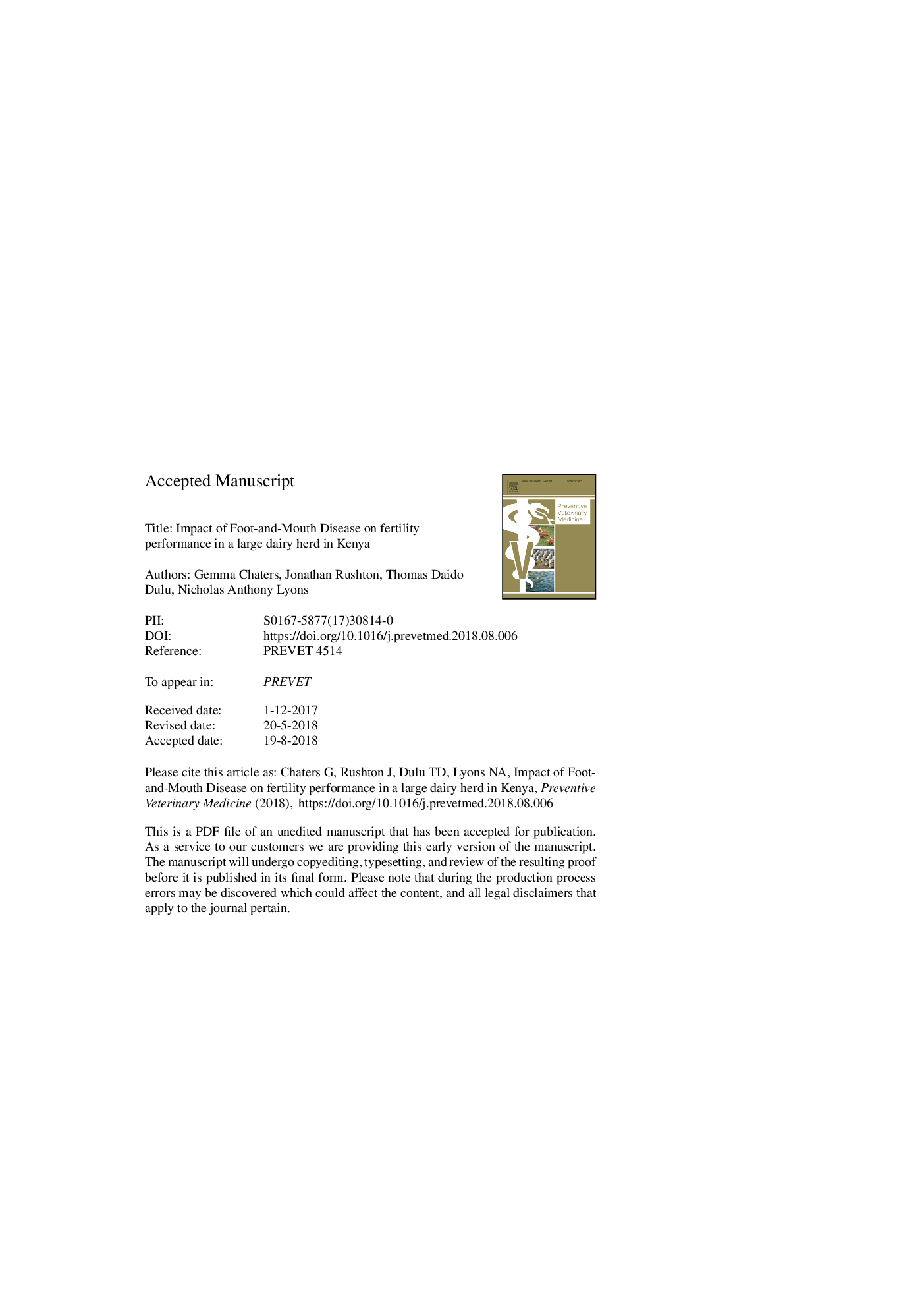| Article ID | Journal | Published Year | Pages | File Type |
|---|---|---|---|---|
| 8962314 | Preventive Veterinary Medicine | 2018 | 27 Pages |
Abstract
The median age of first calving in clinically affected young-stock was 2.7 months higher than non-clinical cases (adjusted HRâ=â0.37, 95%CI 0.21-0.67, Pâ=â0.01). There was no evidence of a difference in fertility related culling and times to first service and conception. Animals susceptible to fertility suppression at the time of the outbreak had a lower hazard of conception compared to animals served prior to the outbreak (HRâ=â0.56, 95%CI 0.41-0.75, Pâ=â0.01). Within the herd, the odds of being a case decreased with parity and age likely related to the lifetime number of vaccination doses received which may reduce the impact among older animals in the herd. Moreover, one would expect the impact to be higher in a non-vaccinating herd to be higher. Notwithstanding these limitations, the results of this study provide evidence that FMD outbreaks in endemic settings impact herd fertility performance. An increased age at first calving is likely to increase rearing costs and reduce an animal's lifetime productivity while poorer conception rates will likely extend calving intervals. Impaired herd fertility and production will incur higher costs to the farmer and society as animals are less productive which for FMD can extend beyond the outbreak period where economic studies tend to focus. These impacts of FMD on herd fertility should be considered when conducting benefit-cost analyses of FMD control to inform resource allocation.
Related Topics
Life Sciences
Agricultural and Biological Sciences
Animal Science and Zoology
Authors
Gemma Chaters, Jonathan Rushton, Thomas Daido Dulu, Nicholas Anthony Lyons,
